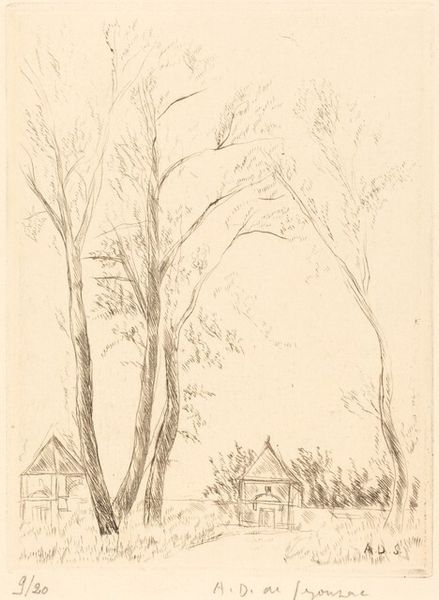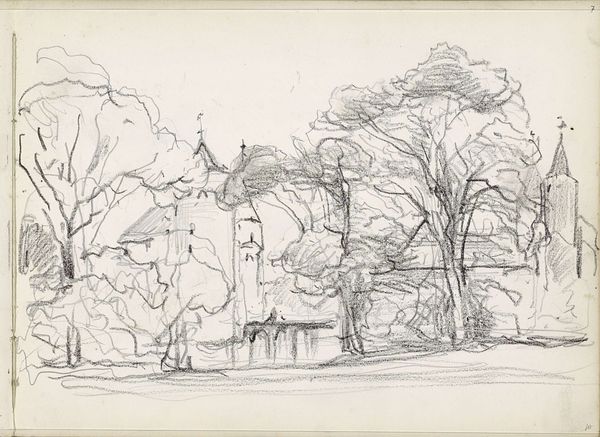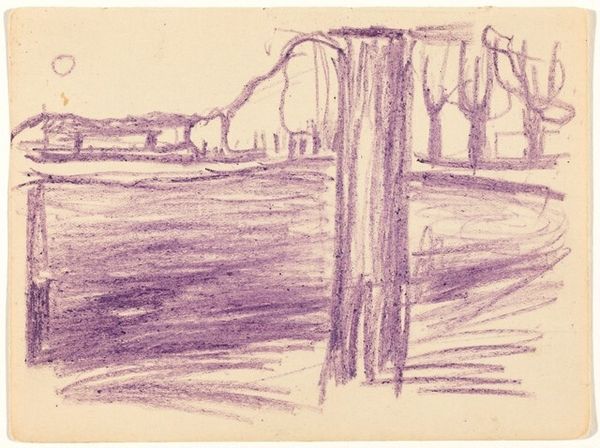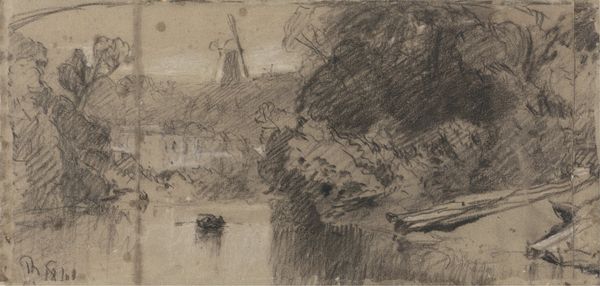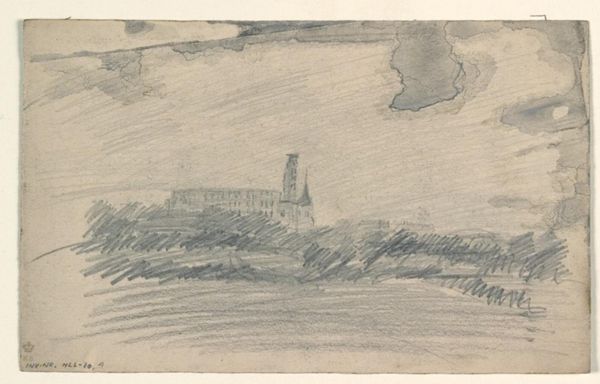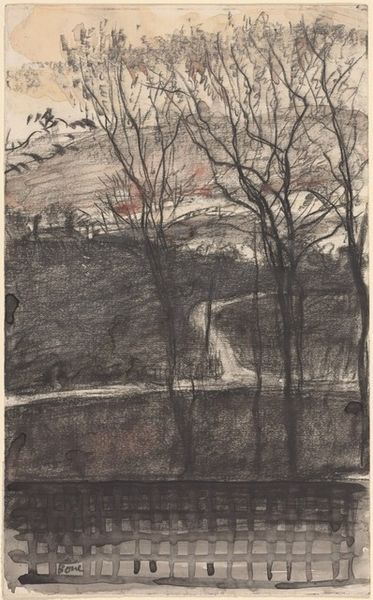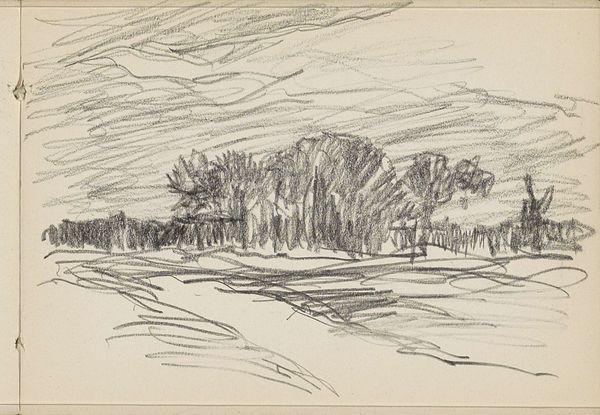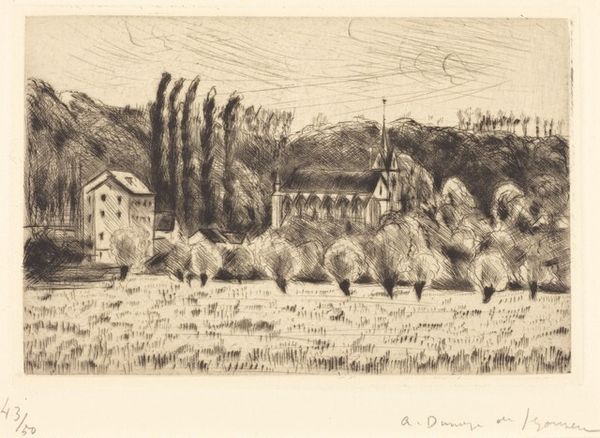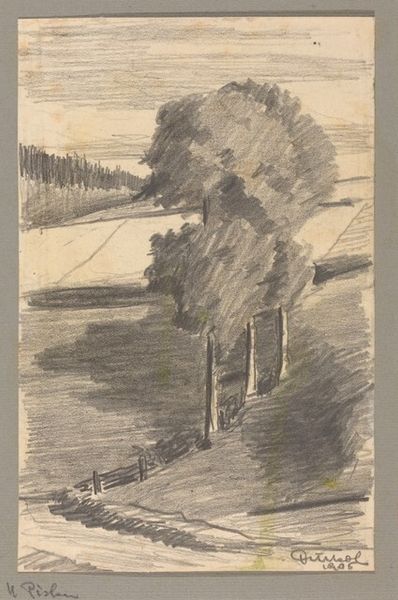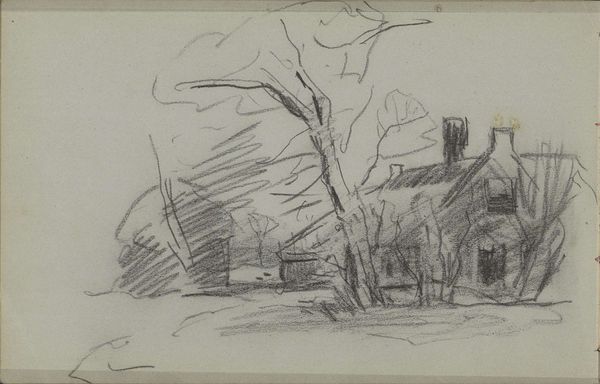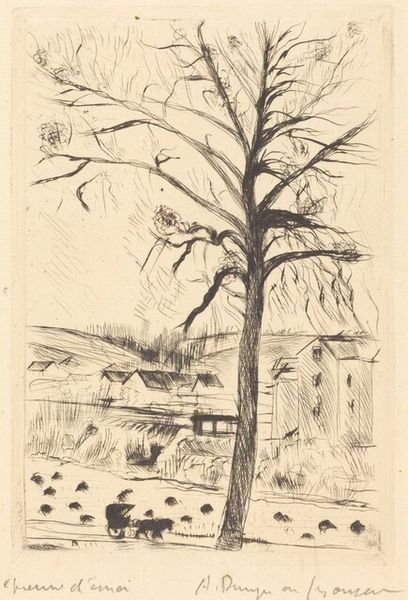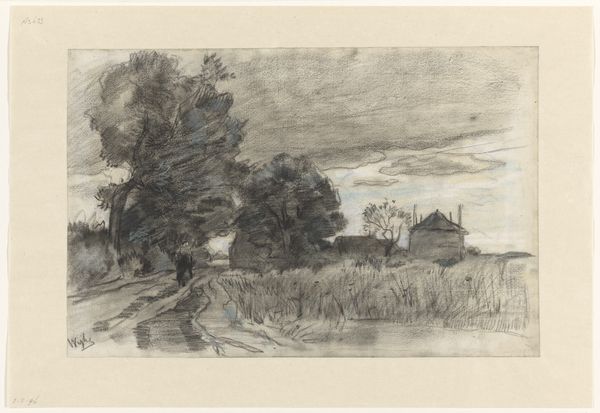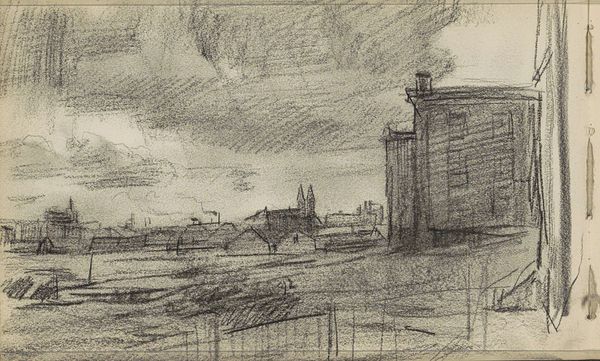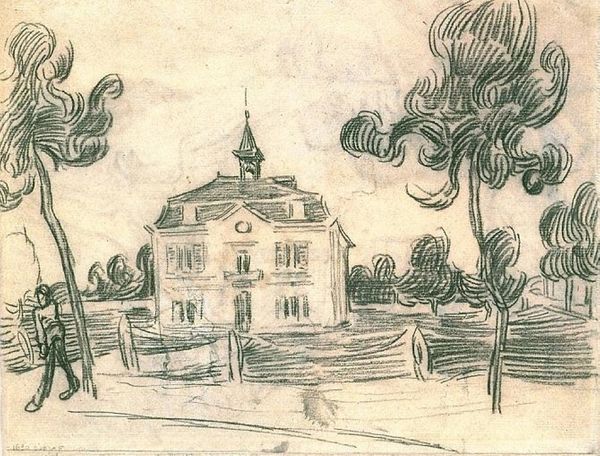
drawing
#
landscape illustration sketch
#
drawing
#
amateur sketch
#
pen sketch
#
pencil sketch
#
incomplete sketchy
#
sketchwork
#
detailed observational sketch
#
pen-ink sketch
#
fantasy sketch
#
initial sketch
Dimensions: sheet: 31.5 x 48.2 cm (12 3/8 x 19 in.)
Copyright: National Gallery of Art: CC0 1.0
Editor: So, this is "A Mill and a Chapel" by André Dunoyer de Segonzac, from 1923. It's a drawing, fairly simple in its composition, and the scene feels almost… abandoned? What catches your eye when you look at it? Curator: Immediately, I think about the context in which this was made, just after the First World War. Segonzac himself served. The sketchy nature of the drawing, the somewhat bleak atmosphere… it resonates with a sense of postwar disillusionment that was prevalent at the time. The positioning of the mill and chapel also strikes me. Editor: How so? Curator: The mill, a symbol of industry and progress, is quite prominent, but seems still or inoperative. The chapel, though present, is distant and perhaps even overshadowed. Do you see any connection to how society might have been viewing traditional institutions versus more modern forces? Editor: I guess it does suggest a shift. The solid mill versus the fainter, further-off chapel implies a society moving away from religion, or at least tradition, and towards… something else? Curator: Precisely. And the artist’s choice to render the scene with such visible strokes—it doesn’t hide the process of creation. It’s raw, exposed, like the feelings many people were experiencing. Was the war to blame? Was it the progress? Do you feel it invites questioning the status quo? Editor: Absolutely, it definitely makes you think about more than just the surface level depiction of a landscape. It uses those simple forms as symbols. Curator: Exactly. And by understanding the historical context, we can read those symbols in a more informed, nuanced way. Editor: That’s really insightful. I initially just saw a sketch, but now I see so much more embedded within it. Curator: That is the beauty of art: to serve as witness, reflecting and refracting the complexities of its time, long past.
Comments
No comments
Be the first to comment and join the conversation on the ultimate creative platform.
